
There were some nice trout captured in the sampling effort.
By Al Kittredge
Photos by Al Kittredge
Virginia Department of Wildlife Resources (DWR) volunteer Al Kittredge shared his account of joining DWR aquatics biologists and volunteers from Smith River Trout Unlimited (SRTU) and Dan River Basin Association (DRBA) on a November trout sampling session on a section of the lower Smith River immediately downstream from Martinsville Dam. Kittredge documented the day’s activities in a blog.
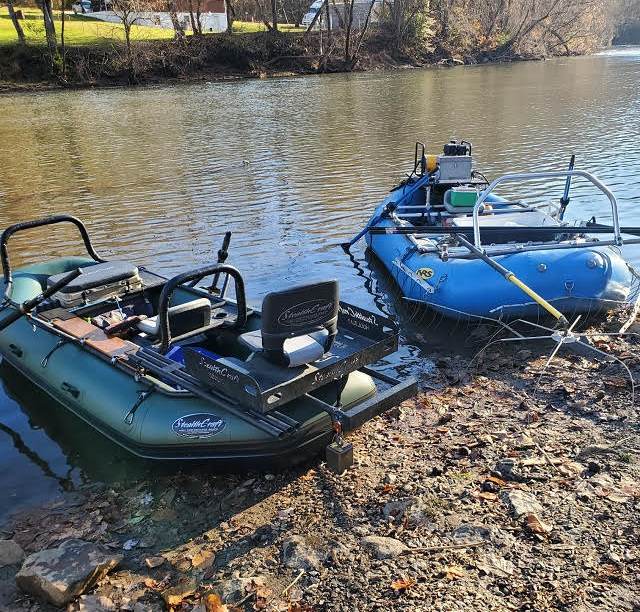
Your humble scribe and DWR Complementary Work Force Volunteer was the oldest member of the sample team. Proud to say 82 and counting – activities like this keep me going. The DWR electronic shocking raft is on the right, SRTU volunteer’s raft is on the left. I’m riding in style today on the rear of the raft on the left. The air temperature is to cold for me to risk as dunking while paddling my usual DWR-supplied kayak – maybe I am getting smarter in my old age!
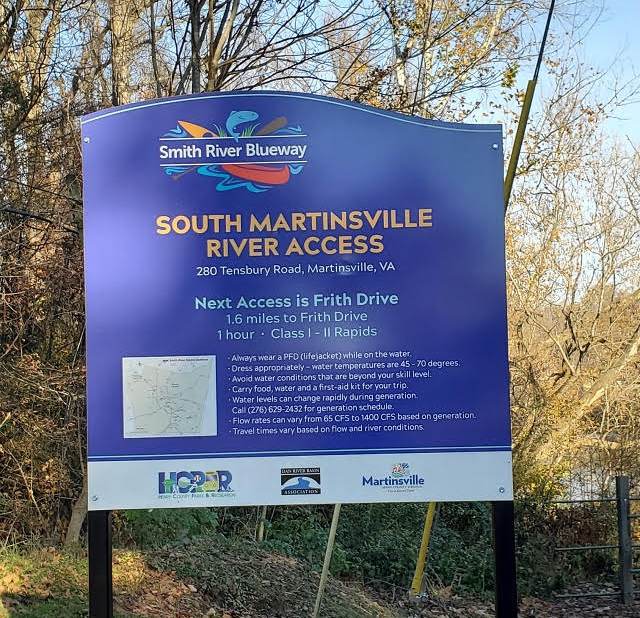
The sampling was done in the river section from the ramp just below Martinsville Dam to the ramp at the Sports Complex.
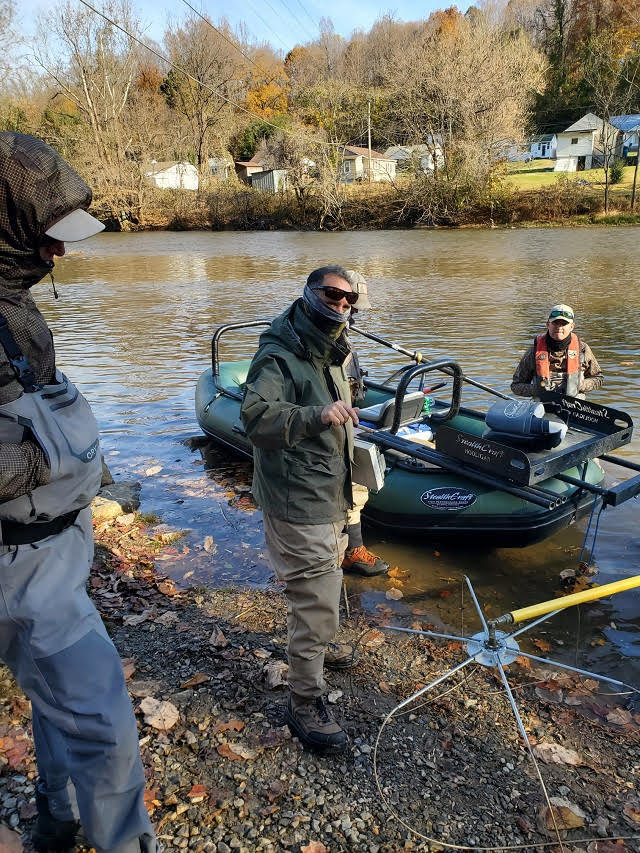
Safety brief collection plan by DWR team leader and biologist George Palmer before we head out. Note the neck gaiters and warm clothes. It was chilly when we started out – in fact it stayed that way the entire day.

Here we go. Once the current catches us there is not turning back until we reach the Sports Complex.
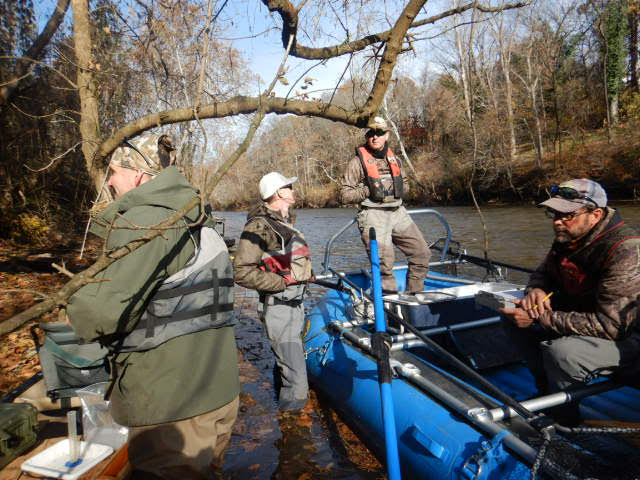
Once the sampling raft’s collection tank is full it is “fish work-up” time. We collected some nice fish.
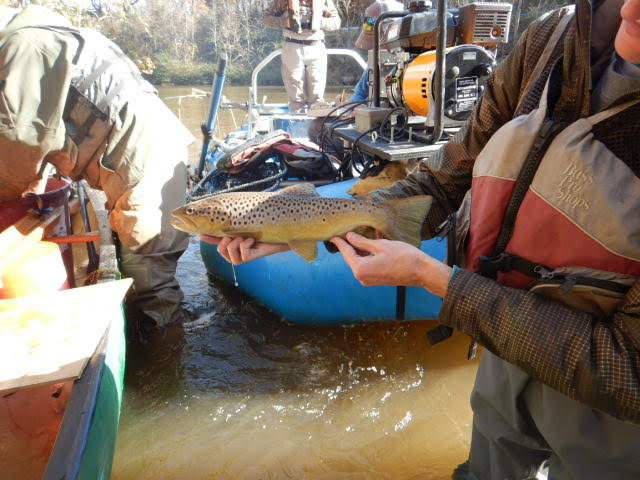
Everything gets identified by species, measured, and weighed.
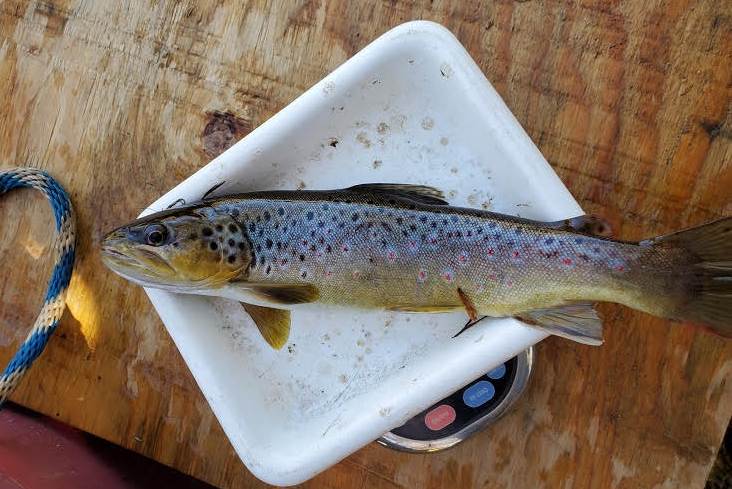

We captured some real nice fish. None of them gave up their life in the name of science. Once we collected the data, every fish was returned to the water shaking it’s head and probably thinking “what the heck was that all about?”
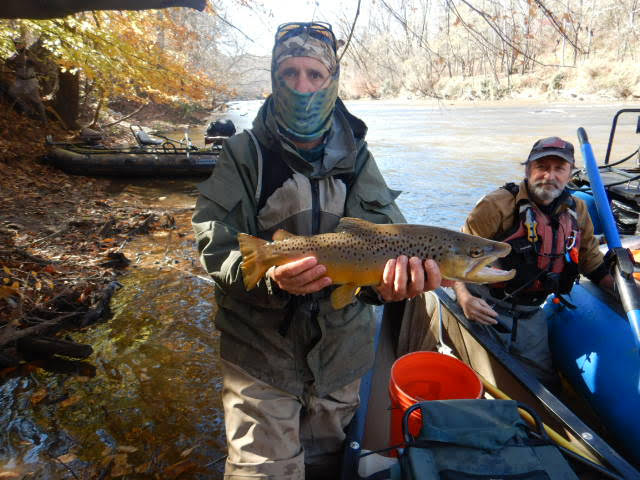
It doesn’t count if you don’t get it all down on paper. You may wonder how they keep the paper from becoming a soaked blob – it is special waterproofed paper all printed with templates for data collection. All the data is eventually entered into a computer where programs spot trends that help the biologists make management decisions.
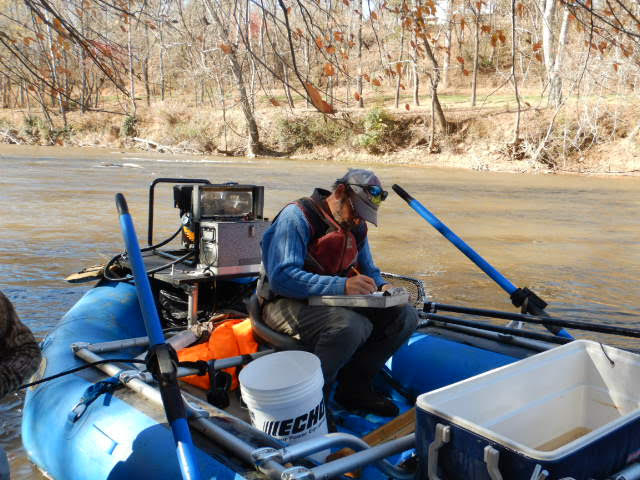
We didn’t collect a whole mess of fish, but this was expected because of problems associated with Philpott Dam. Of the fish we did collect, there were those that would definitely put a bend in your rod. They all fell within the protected range of 10-24 inches, which means they would be illegal to place on a stringer or in your creel. If folks follow the regulation they would enjoy the fight, take a quick picture for bragging rights, and slip the fish back in the water for some other angler to enjoy.
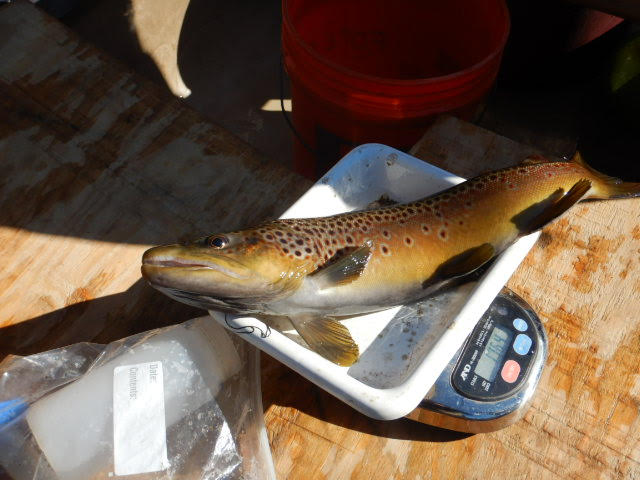
Sports Complex ramp is a little touchy to take out. The first thing you must remember is that the water drops off way over your waders right at the water’s edge. The ramp is really built for kayaks and canoes. DWR vehicles are 4WD and equipped with winches – even then it is tricky.
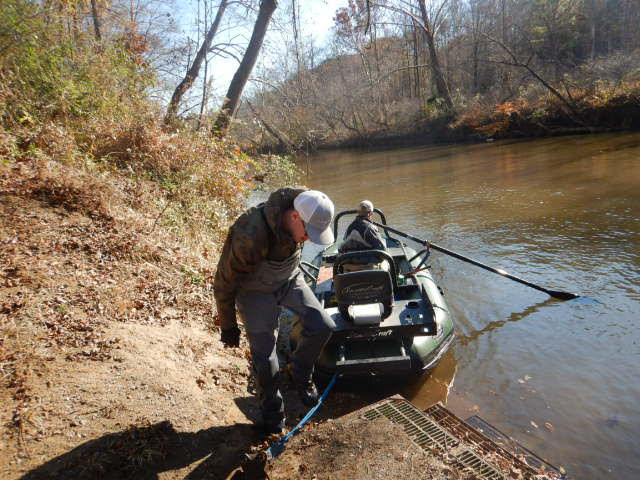

Find out more about Complementary Work Force opportunities on the DWR website!


